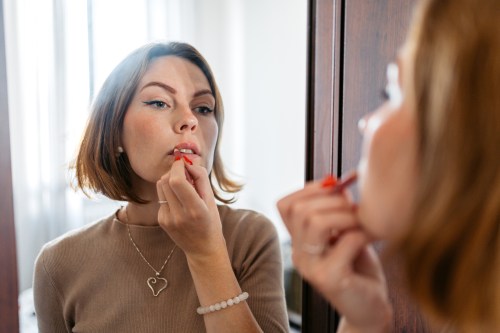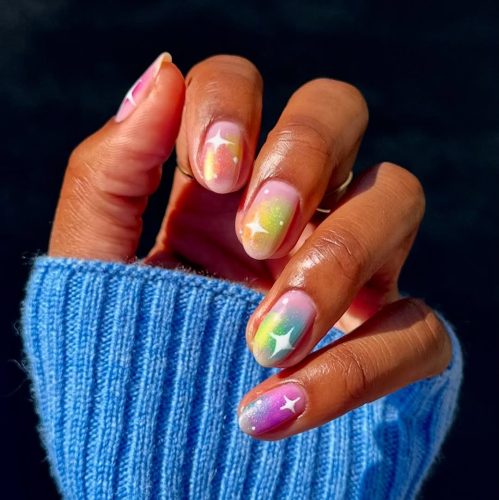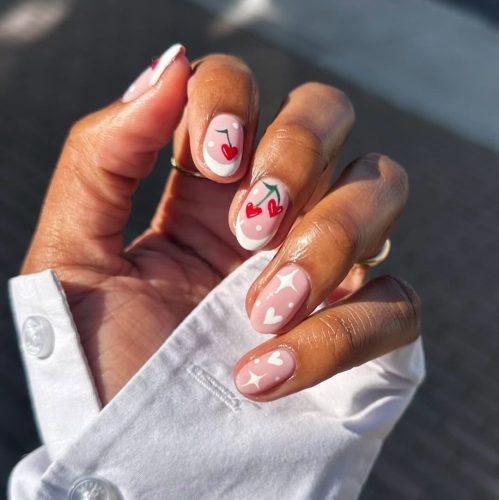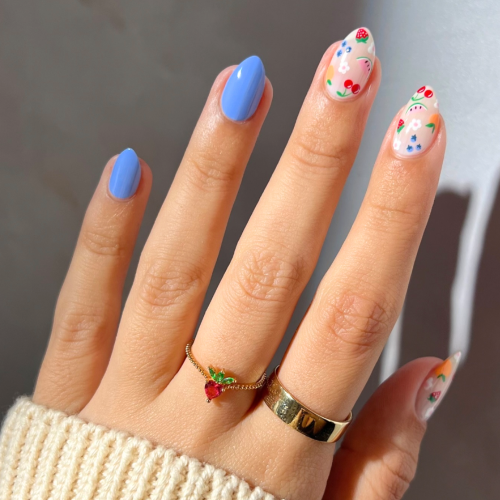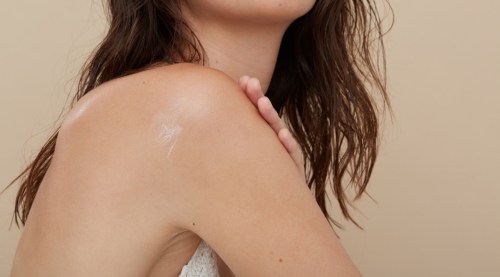5 Things To Look for When Switching to Sustainable Beauty Products
If you're looking to switch to a more sustainable beauty routine, these product tips will serve as your guide.

The beauty industry is booming. According to NPD, the first half of 2022 saw those with household incomes of $100,000 or more upping their cosmetic consumption by 14 percent year over year, spending nearly $9 billion on makeup, skin care, and the like. And while many of the most prevalent beauty brands are indeed making strides in the sustainability sector, the industry’s growth rate along with general confusion around what qualifies a product as “sustainable” makes for a complicated conversation around consumerism.
As with most marketing terms not tied to a verified certification system, descriptors like “clean” or “sustainable” are commonly attached to beauty products so that you direct your dollar while diverting your attention away from what’s actually in them. “The cosmetics sector is one of the world’s most unsustainable industries,” says Lorraine Dallmeier, a biologist, Chartered Environmentalist, and the CEO of Formula Botanica. “Most of these cosmetics haven’t been created with eco-design principles in mind, meaning that our use of beauty products has the potential to pollute ecosystems around the world with non-biodegradable formulations.”
Though many of our topicals end up swirling discreetly down the drain, out of sight definitely does not mean out of the environment. “The chemicals that we use on and in our bodies maintain their properties in seawater,” says Lea d’Auriol, founder of NGO Oceanic Global.” They’re ingested by marine life and can later re-enter human bodies, where they can increase the risk of endocrine disruption and disease.” The World Ocean Assessment has found chemicals from consumer products like pharmaceuticals and personal care in every part of the ocean. “The Wastewater management systems that we have globally were not made to filter for these types of chemicals,” she says. “Everyone always talks about plastics, and yes that’s a huge issue, but this one is similarly complex—we just can’t see it.”
Opting for more natural ingredients is indeed the better environmental choice when considering product runoff—but their inclusion doesn’t necessarily make a given beauty product sustainable.
What is a sustainable beauty product?
This question is complicated, but Dallmeier favors a simple definition: “A sustainable beauty product is one that can be produced to meet sustainable consumer demands without compromising the ability of future generations to meet their own needs,” she says.
Packaging issues aside (and those issues are numerous), Dallmeier notes that there are very few ingredients that are unquestionably sustainable, as natural and synthetic additives alike undergo an entire life before finding their way into your precious products. “Sustainability depends entirely on how an ingredient is grown, harvested, sourced, processed, synthesized, shipped, and used in manufacturing,” she says. “The sustainability of growing, synthesizing, and sourcing ingredients will vary from location to location, from grower to grower, from lab to lab, and potentially even from batch to batch.”
Dallmeier says sourcing our ingredients sustainably is important, but that “it’s a side effect of the rampant consumption encouraged by the mainstream cosmetics industry,” she continues. “We cannot drive infinite economic growth when using finite natural resources in every level of the supply chain.”
From a production standpoint, a truly sustainable future will translate to a reduction in volume and a broader embracing of circularity. But for those of us wanting to make a change today, there are a handful of things to look for when switching to sustainable products.
1. Organic ingredients
To begin, keep an eye out for organic ingredients whenever possible. “Organic farming encourages wildlife and environmental stewardship of the land, and is based on a set of internationally recognized principles around health, ecology, fairness, and care, which take a big picture view of sustainability,” says Dallmeier.
A USDA Organic seal means that the ingredients in your beauty products have been regulated through the National Organic Program.NSF International indicates a formula that is 70 percent organic, and Ecocert’s COSMOS certification takes the production and packaging of organic products into account, too.
2. Sustainable certifications
While a USDA Organic certification is great, it’s only the beginning on the sustainable certification front. Many beauty products—including skincare, makeup, and hair care—can be Fair Trade Certified, which indicates that the product was made according to “rigorous standards that promote sustainable livelihoods and safe working conditions, protection of the environment, and strong, transparent supply chains.”
There’s also FSC-Certified products, which indicate wood and/or bamboo items like makeup brush handles or skincare bottle lids “come from responsibly managed forests that provide environmental, social, and economic benefits.” Not every product is going to rep every sustainable label, but it’s a good sign when the brand takes the time to get one.
3. Multi-function formulas
Once you’ve compiled a list of beauty brands you’re excited to support, try selecting products that serve multiple purposes. While we all love a luxurious cosmetic lineup, choosing offerings that are long-lasting and multi-functional is undoubtedly the more sustainable choice.
We’re not talking two-in-one conditioner here. Instead, think pigments that can be used on lids, cheeks, and lids, multipurpose balms, any product in bar form (a solid formula means a reduced water footprintand less plastic), and more.
4. “Free-of” statements
While looking at which ingredients a beauty product contains is important, it’s also helpful to find out what’s not included. Looking for “free-off” lists on the packaging of a product you’re interested in can tell you a lot about its sustainability. For instance, a product that’s free of parabens, synthetic dyes, and petrochemicals is going to be more environmentally-friendly than a product that contains them.
5. Circular end-of-life plans
Most beauty brands say their plastic packaging is recyclable. In reality—despite sporting a recycling symbol—only 32 percent of recyclable materials are actually recycled in the United States. That’s especially true of beauty products, as they generally require special care in order to avoid landfills.
That’s why looking for brands that share end-of-life plans for their products can make a difference. Do they have a refill program in place? Do they accept empties for recycling to ensure those materials stay out of the trash? Companies that focus on circularity are thinking about all stages of a product’s lifespan.
Just remember: You don’t have to be perfect to lessen your eco-impact. Like everything else, sustainability is about the long game. By making sure that the majority of changes you make to your beauty regimen are sustainable for you as well as the planet, you’re bound to make a difference.
Sign Up for Our Daily Newsletter
Get all the latest in wellness, trends, food, fitness, beauty, and more delivered right to your inbox.
Got it, you've been added to our email list.
